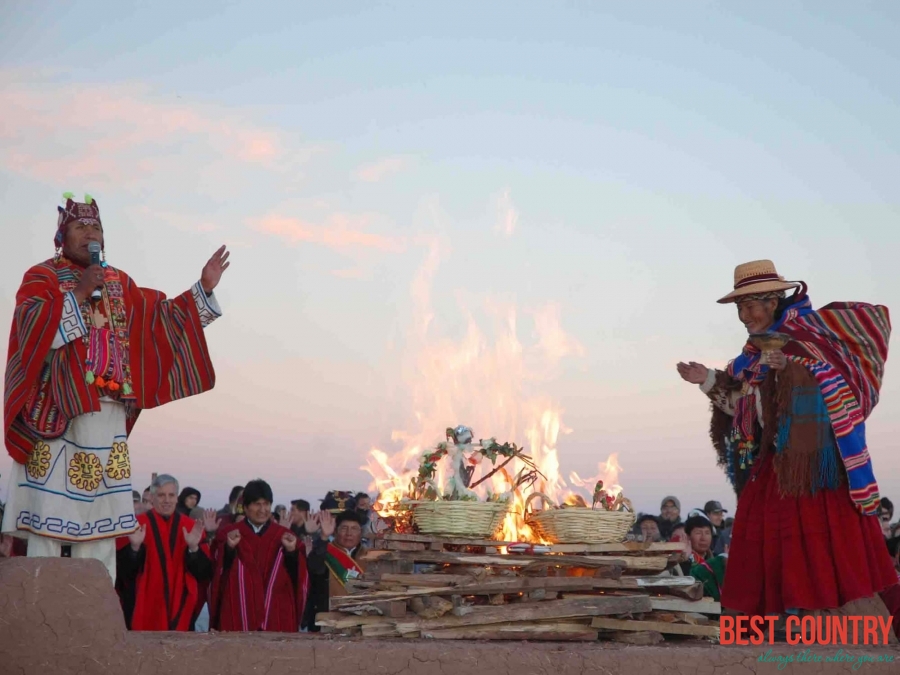The Willkakuti or return of the sun is celebrated on June 21st in the pre-inca ruins of Tiwanaku. This ritual is known as the Aymara new year. The return of the sun symbolizes the reception of renewed cosmic energies and also the beginning of the new agriculture cycle.
Willkakuti
 The Andean-Amazonic New Year (Spanish: Ano Nuevo Andino Amazonico; Aymara: Willka Kuti or Return of the Sun) is a national holiday in Bolivia. It celebrates the winter solstice in the Southern Hemisphere and was declared a national holiday in Bolivia for the first time in 2010.
The Andean-Amazonic New Year (Spanish: Ano Nuevo Andino Amazonico; Aymara: Willka Kuti or Return of the Sun) is a national holiday in Bolivia. It celebrates the winter solstice in the Southern Hemisphere and was declared a national holiday in Bolivia for the first time in 2010.
The Aymara New Year traditionally starts at the sunrise on the day of the solstice and is received by drums and quenas: the ancient sounds of Bolivian music. Each year more than thirty thousand people gather to witness this ritual.
The ceremony takes place in the esplanade of the semi-subterranean temple of Kalasaya, cradle of the oldest pre-Colombian civilization of America, the Tiwanakotas.
With arms extended to the sun, thousands of Bolivians welcome the arrival of the Aymara new year with ancestral rituals. In the mythical Gate to the Sun they wait for dawn to begin with the first rays of the sun the rituals of devotion to their gods.
Dressed in their typical costumes, the Aymara priests lead the religious ceremony, in which they offer gifts to the Sun and Earth, divinities in the aymara religion.
Traditional Program
June 20
Pilgrimage to Quimsa Chata, where there is an offering to mother earth.
In the afternoon, Cultural Festival for all visitors. This lasts through the night and it is accompanied by native music.
June 21
Ritual Ceremony of the Great Willkakuti at the temple of Kalasasaya.
The sun rises around 07:25 a.m. when all locals and visitors receive the Cosmic Energy of the first rays of the sun on a New Year. This is done by raising the hands to the rays of the new sun as tradition calls.